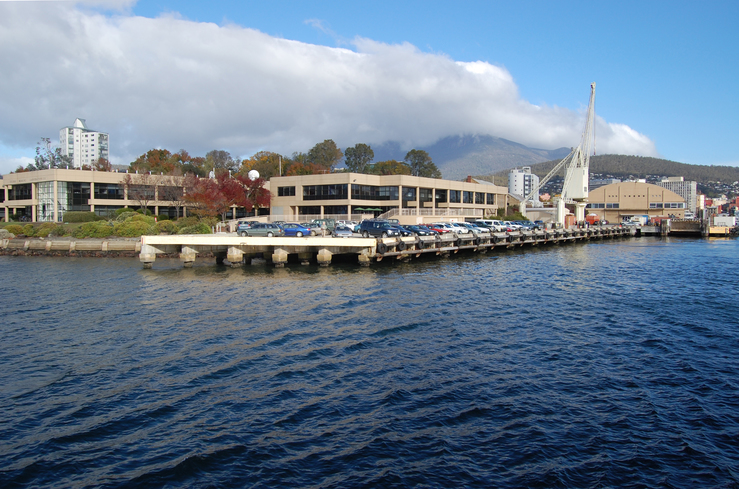Outside of a handful of research articles, much of the ongoing work in CKMR is either yet unpublished, or in grey literature that may be hard to find. Our intention here is to provide a list of CKMR-related research, with links where possible.
In its simplest form, where sampling occurs once and the frequency of parent-offspring pairs is used to estimate abundance, CKMR can be viewed as a Lincoln-Petersen type estimator. One of the earliest published examples of CKMR (written before CKMR was an acronym) used parent-offspring pairs from spawning and juvenile Chinook salmon to estimate abundnace of spawners in exactly this fashion [5]. Extensions to the Lincoln-Petersen estimator that involve multiple years and cohorts were also recently used to estimate the abundance of Brook trout populations [6] which could be compared with alternative removal-sampling estimates of abundance as a form of validation.
However, to date the largest successes in applying CKMR to natural populations have undoubtedly been centered at the CSIRO marine lab in Hobart, Tasmania.
There, a team of statisticians and geneticists (including Mark Bravington) have been extremely successful in applying and extending CKMR to high profile tuna [8] and shark populations [10], including many yet-to-be published examples. They have also conducted scoping studies for additional species, including statistical [e.g., 11, 12] and genetic requirements [13].
Additional work has been done relating close-kin estimates of abundance to effective population size [14] and to investigate potential bias of naive (non-spatial) CKMR estimators under incomplete mixing (limited dispersal) coupled with spatially biased sampling [15]. There is also a number of published or ongoing applications of CKMR to elasmobranch populations [16] and seals.
1. Skaug HJ. Allele-sharing methods for estimation of population size. Biometrics. 2001;57:750–6.
2. Nielsen R, Mattila DK, Clapham PJ, Palsbøll PJ. Statistical approaches to paternity analysis in natural populations and applications to the North Atlantic humpback whale. Genetics. 2001;157:1673–82.
3. Bravington MV, Skaug HJ, Anderson EC, others. Close-kin mark-recapture. Statistical Science. 2016;31:259–74.
4. Skaug HJ. The parent–offspring probability when sampling age-structured populations. Theoretical population biology. 2017;118:20–6.
5. Rawding DJ, Sharpe CS, Blankenship SM. Genetic-based estimates of adult chinook salmon spawner abundance from carcass surveys and juvenile out-migrant traps. Transactions of the American Fisheries Society. 2014;143:55–67.
6. Ruzzante DE, McCracken GR, Førland B, MacMillan J, Notte D, Buhariwalla C, et al. Validation of close-kin mark–recapture (CKMR) methods for estimating population abundance. Methods in Ecology and Evolution. 2019;10:1445–53.
7. Bravington MV, Grewe PM, Davies CR. Absolute abundance of southern bluefin tuna estimated by close-kin mark-recapture. Nature communications. 2016;7:13162.
8. Davies C, Bravington M, Eveson P, Lansdell M, Aulich J, Grewe P. Next-generation close-kin mark recapture. Fisheries Research; Development Corporation; 2020.
https://www.frdc.com.au/sites/default/files/products/2016-044-DLD.pdf.
9. Hillary R, Bravington M, Patterson T, Grewe P, Bradford R, Feutry P, et al. Genetic relatedness reveals total population size of white sharks in eastern Australia and New Zealand. Scientific reports. 2018;8:2661.
10. Patterson T, Hillary R, Feutry P, Gunasakera R, Marthick J, Pillans R. Rapid estimation of cryptic adult abundance and breeding dynamics in a critically endangered elasmobranch from close-kin mark recapture. bioRxiv. 2022.
11. Davies C, Bravington M, Thomson R. Advice on close-kin mark-recapture for estimating abundance of eastern Atlantic bluefin tuna: A scoping study. ATLANTIC-WIDE RESEARCH PROGRAMME ON BLUEFIN TUNA (ICCAT GBYP-PHASE 5) GBYP 07c/2015 International Commission for the Conservation of Atlantic Tuna. 2017.
12. Kolody D, Bravington M. Is close-kin mark recapture feasible for IOTC yellowfin tuna stock assessment. IOTC Working Party on Methods document IOTC–2019–WPM10–25-rev.1; 2019.
https://www.iotc.org/meetings/10th-working-party-methods-wpm10.
13. Bravington M, Thomson R, Davies C. Genotyping issues for
CKMR on atlantic bluefin tuna. Report to the Atlantic-wide research programme on bluefin tuna (ICCAT GBYP - Phase 5) of the International Commission for the Conservation of Atlantic Tuna; 2017.
https://www.iccat.int/GBYP/Docs/Close_Kin_Mark_Recapture_Phase_6_Genotyping_Issues.pdf.
14. Waples RS, Grewe PM, Bravington MW, Hillary R, Feutry P. Robust estimates of a high Ne/N ratio in a top marine predator, southern bluefin tuna. ASTA Science Advances. 2018;4:eaar7759.
15. Conn PB, Bravington MV, Baylis S, Ver Hoef JM. Robustness of close-kin mark-recapture estimators to dispersal limitation and spatially varying sampling probabilities. Ecology and Evolution. 2020;10:5558–69.
16. Trenkel VM, Charrier G, Lorance P, Bravington MV. Close-kin mark–recapture abundance estimation: Practical insights and lessons learned. ICES Journal of Marine Science. 2022;79:413–22.
